Project Gutenberg (PG) is a volunteer effort to digitize and archive cultural works, as well as to "encourage the creation and distribution of eBooks." It was founded in 1971 by American writer Michael S. Hart and is the oldest digital library. Most of the items in its collection are the full texts of books or individual stories in the public domain. All files can be accessed for free under an open format layout, available on almost any computer. As of 3 October 2015, Project Gutenberg had reached 50,000 items in its collection of free eBooks.

Geranium is a genus of 422 species of annual, biennial, and perennial plants that are commonly known as geraniums or cranesbills. They are found throughout the temperate regions of the world and the mountains of the tropics, with the greatest diversity in the eastern part of the Mediterranean region.

Wikisource is an online digital library of free-content textual sources on a wiki, operated by the Wikimedia Foundation. Wikisource is the name of the project as a whole and the name for each instance of that project ; multiple Wikisources make up the overall project of Wikisource. The project's aim is to host all forms of free text, in many languages, and translations. Originally conceived as an archive to store useful or important historical texts, it has expanded to become a general-content library. The project officially began on November 24, 2003, under the name Project Sourceberg, a play on the famous Project Gutenberg. The name Wikisource was adopted later that year and it received its own domain name.

Geranium robertianum, commonly known as herb-Robert, or Roberts geranium, is a common species of cranesbill native to Europe and parts of Asia, North Africa, and parts of North America. The plant has many vernacular names, including red robin, death come quickly, fox geranium, stinking Bob, squinter-pip (Shropshire) and crow's foot.
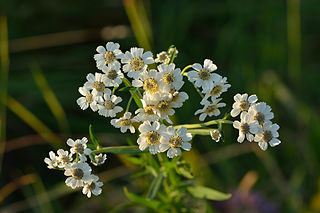
Achillea ptarmica is a European species of herbaceous perennial flowering plant in the genus Achillea of the daisy family Asteraceae. Common names include the sneezewort, sneezeweed, bastard pellitory, European pellitory, fair-maid-of-France, goose tongue, sneezewort yarrow, wild pellitory, and white tansy. It is widespread across most of Europe and naturalized in scattered places in North America. It is native to Europe and western Asia.

Allan Quatermain is the protagonist of H. Rider Haggard's 1885 novel King Solomon's Mines, its one sequel Allan Quatermain (1887), twelve prequel novels and four prequel short stories, totalling eighteen works. An English professional big game hunter and adventurer, in film and television he has been portrayed by Richard Chamberlain, Sean Connery, Cedric Hardwicke, Patrick Swayze and Stewart Granger among others.
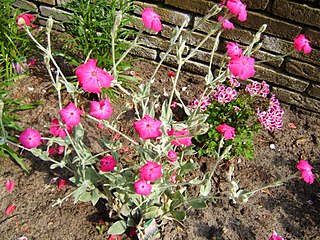
Silene coronaria, the rose campion, is a species of flowering plant in the family Caryophyllaceae, native to Eurasia. Other common names include dusty miller, mullein-pink and bloody William. In the United Kingdom it is still widely referenced under its synonym Lychnis coronaria.

Erodium is a genus of flowering plants in the botanical family Geraniaceae. The genus includes about 60 species, native to North Africa, Indomalaya, the Middle East, and Australia. They are perennials, annuals, or subshrubs, with five-petalled flowers in shades of white, pink, and purple, that strongly resemble the better-known Geranium (cranesbill). Cultivated plants are known as filarees or heron's bill in North America, whereas in the British Isles they are usually called storksbills.

Xanthisma texanum, the Texas sleepydaisy or star-of-Texas, is an ornamental plant native to the United States. This plant is usually propagated by seeds.

Scabiosa atropurpurea, the mourningbride, mournful widow, pincushion flower, or sweet scabious, is an ornamental plant of the genus Scabiosa in the family Caprifoliaceae. It is native to southern Europe.

Houstonia caerulea, commonly known as azure bluet, Quaker ladies, or bluets, is a perennial species in the family Rubiaceae. It is native to eastern Canada and the eastern United States. It is found in a variety of habitats such as cliffs, alpine zones, forests, meadows and shores of rivers or lakes.
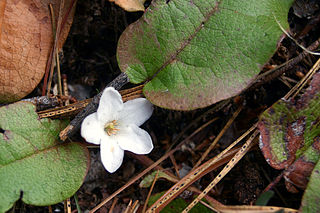
Epigaea repens, the mayflower, trailing arbutus, or ground laurel, is a low, spreading shrub in the family Ericaceae. It is found from Newfoundland to Florida, west to Kentucky and the Northwest Territories.

Hardy Perennials and Old Fashioned Flowers — Describing the Most Desirable Plants, for Borders, Rockeries, and Shrubberies is a horticulture and gardening book by John Wood, published in 1884 in London by L. Upcott Gill. The book consists of descriptions of common British flowers, organized alphabetically by their scientific name. The first volume was released in April 1883. The book was put online by the Project Gutenberg Literary Archive Foundation in 2006.

Micranthes virginiensis, the early saxifrage, or Virginia saxifrage, is a wildflower native to eastern and central North America.

Podbrdo is a settlement in the Municipality of Tolmin in the Littoral region of Slovenia. It lies in narrow valley of the Bača River, next to the Bohinj Railway line at the end of the longest railway tunnel in Slovenia and next to the road from Bohinjska Bistrica and Železniki across Petrovo Brdo towards Most na Soči.

The Giardino Botanico Alpinia is a botanical garden specializing in alpine plants, located at 800 m altitude above Stresa on Lake Maggiore, Province of Verbano-Cusio-Ossola, Piedmont, Italy. It can be reached via the Lido di Carciano - Alpino - Mottarone cable car, and is open daily in the warmer months.
The Giardino Botanico Alpino "Giangio Lorenzoni" is an alpine botanical garden located in Pian di Cansiglio, Boral del Giaz, Tambre d'Alpago, Province of Belluno, Veneto, Italy. It is open daily in the warmer months.
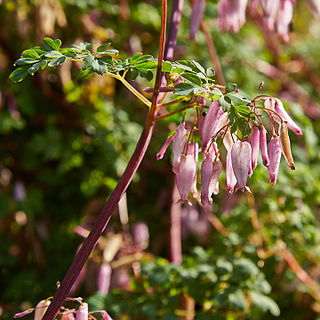
Adlumia fungosa is a species in the Papaveraceae that is commonly known as the Allegheny vine, climbing fumitory, or mountain fringe. It is a herbaceous, creeping, flowering plant and is closely related to the Fumitory genus, Fumaria.
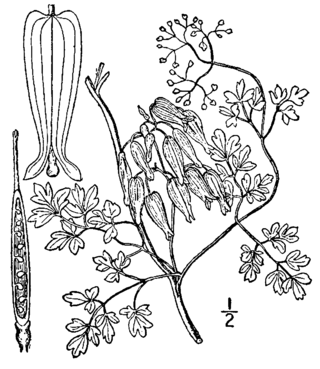
Adlumia is a genus of two species in the family Papaveraceae. The genus name derives from John Adlum (1759–1836), a surveyor, associate judge, plantsman and agriculturist who ran an 80 hectares experimental farm in Georgetown, Washington, D.C. The genus was first described and published in Syst. Nat. Vol.2 on page 111 in 1821.

















